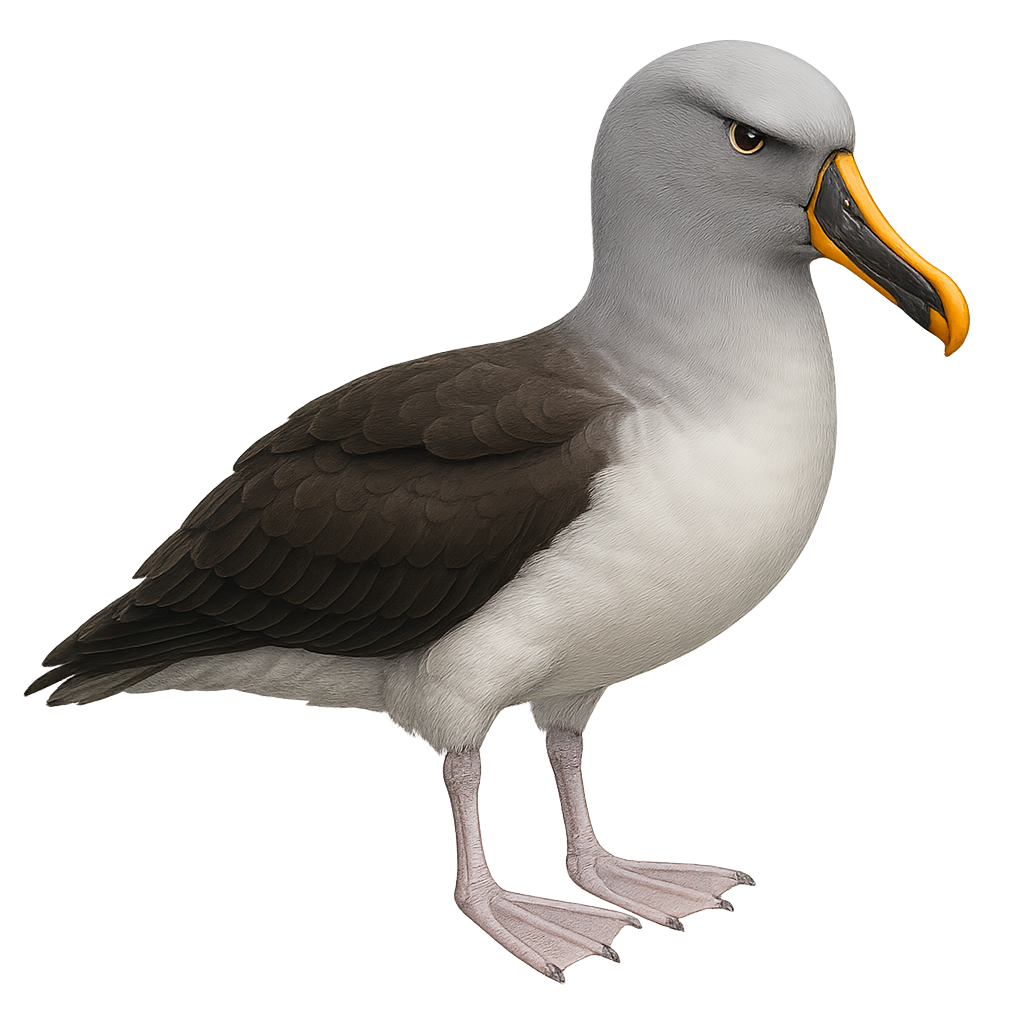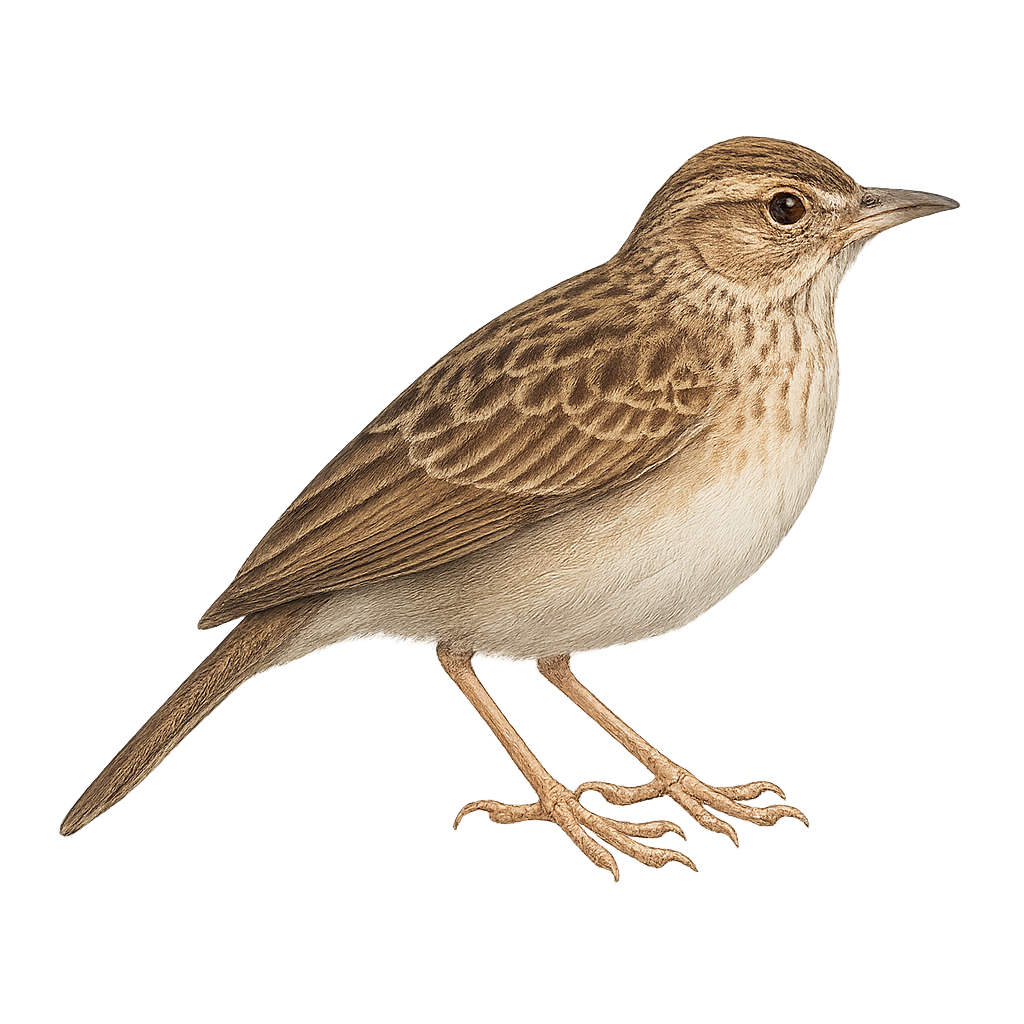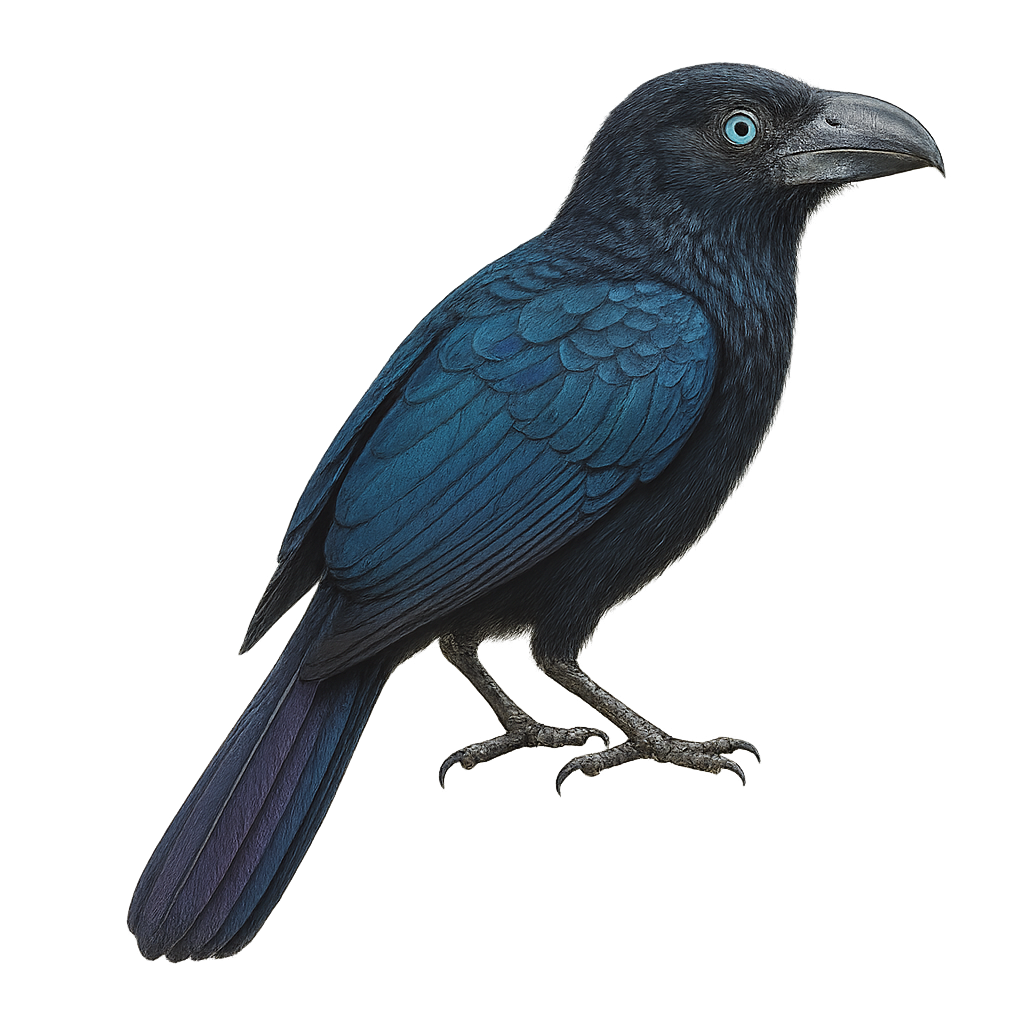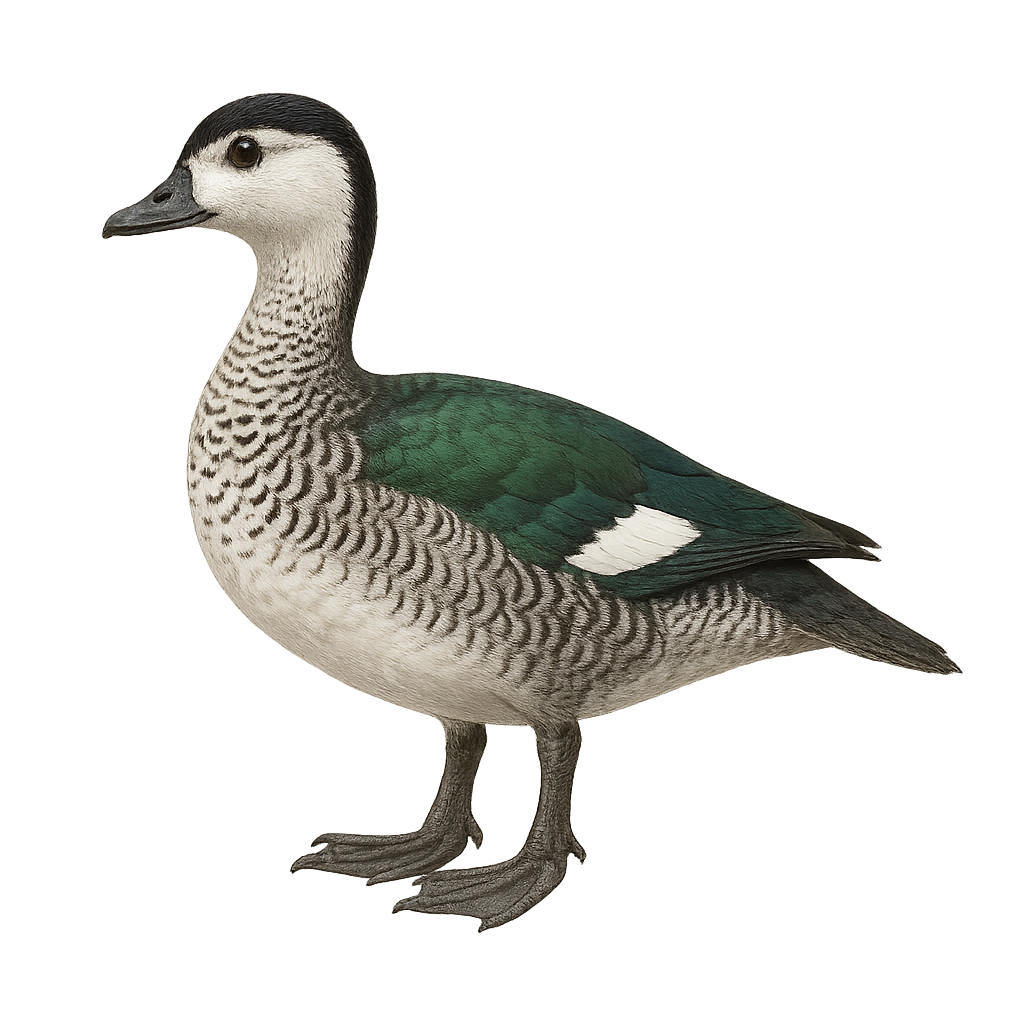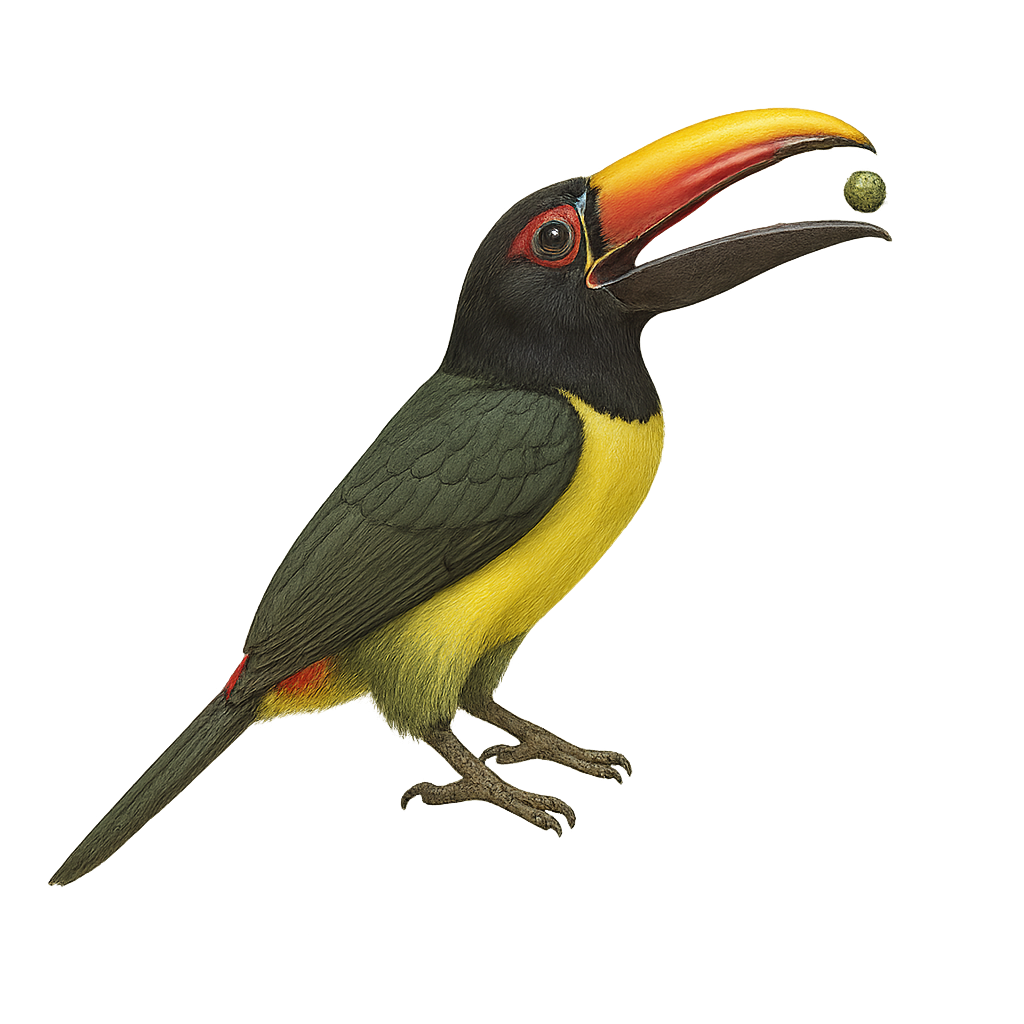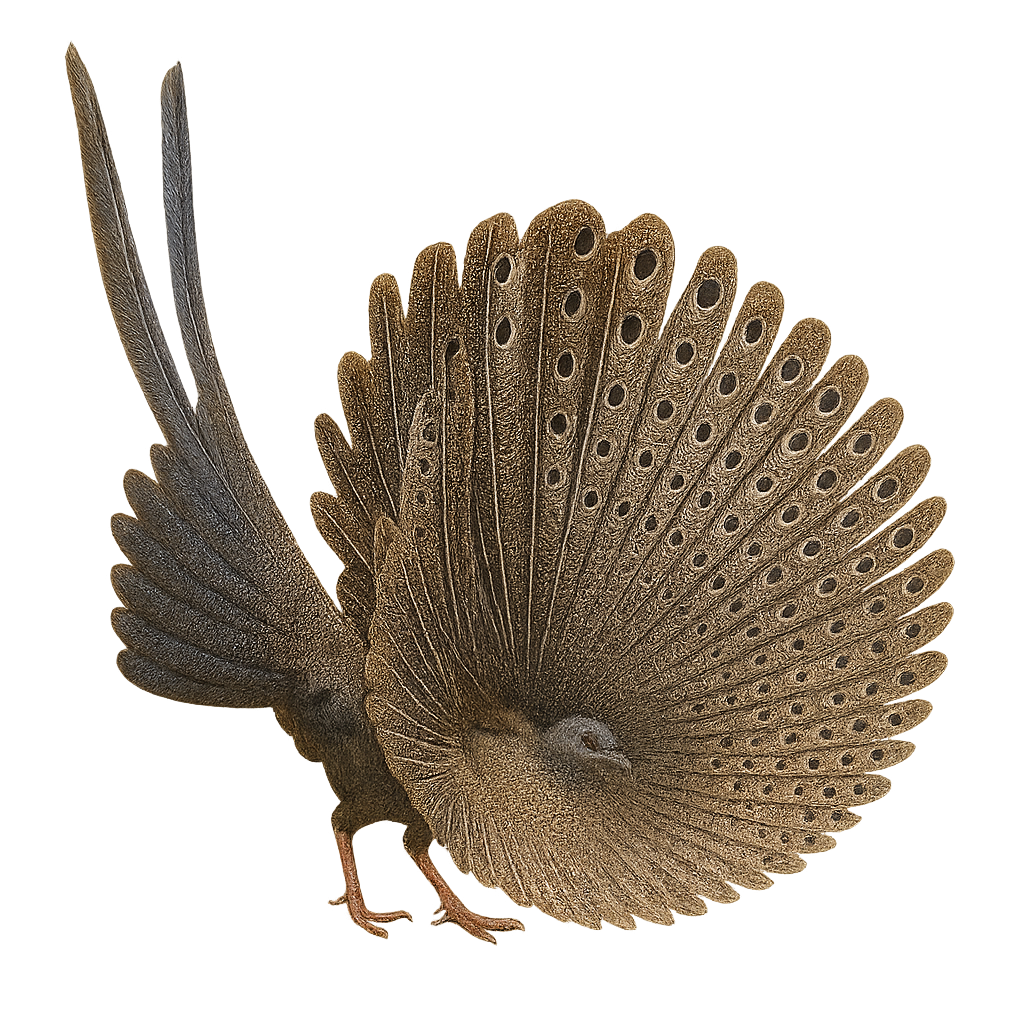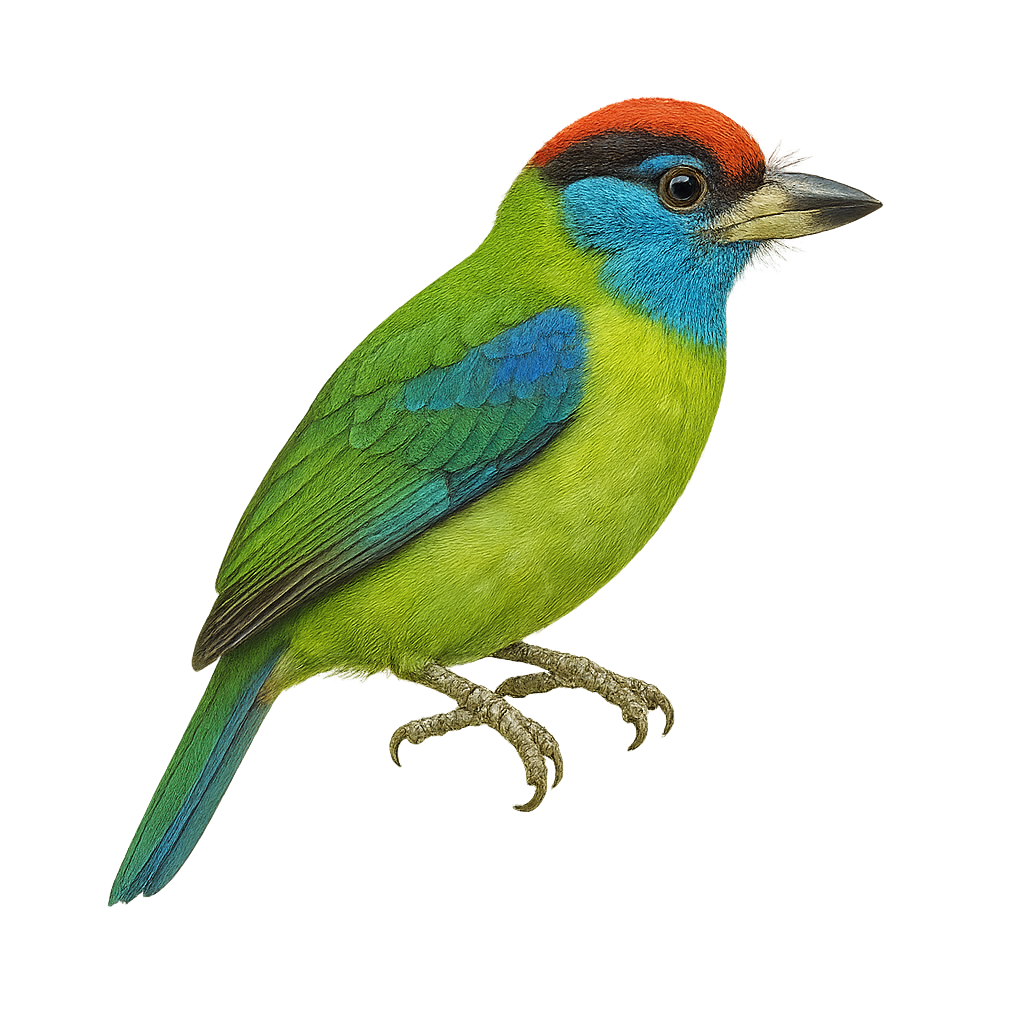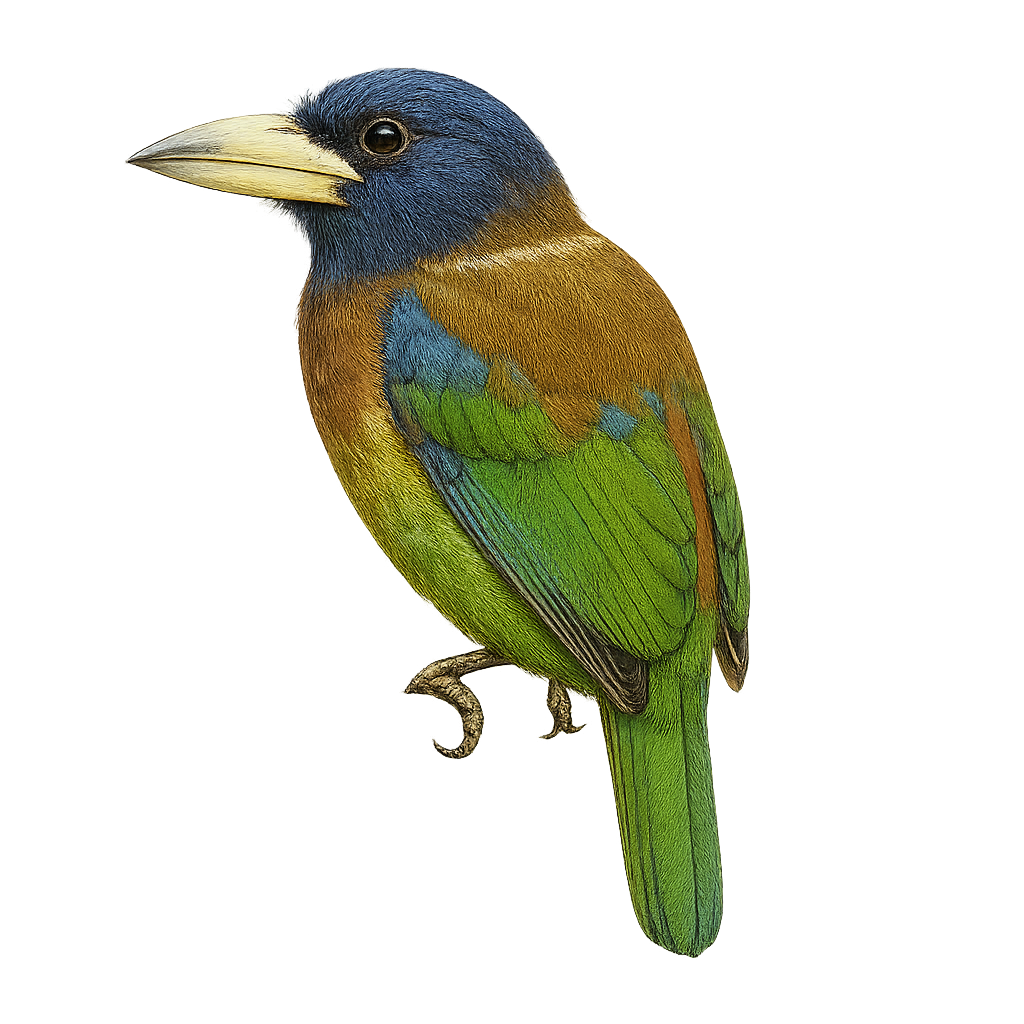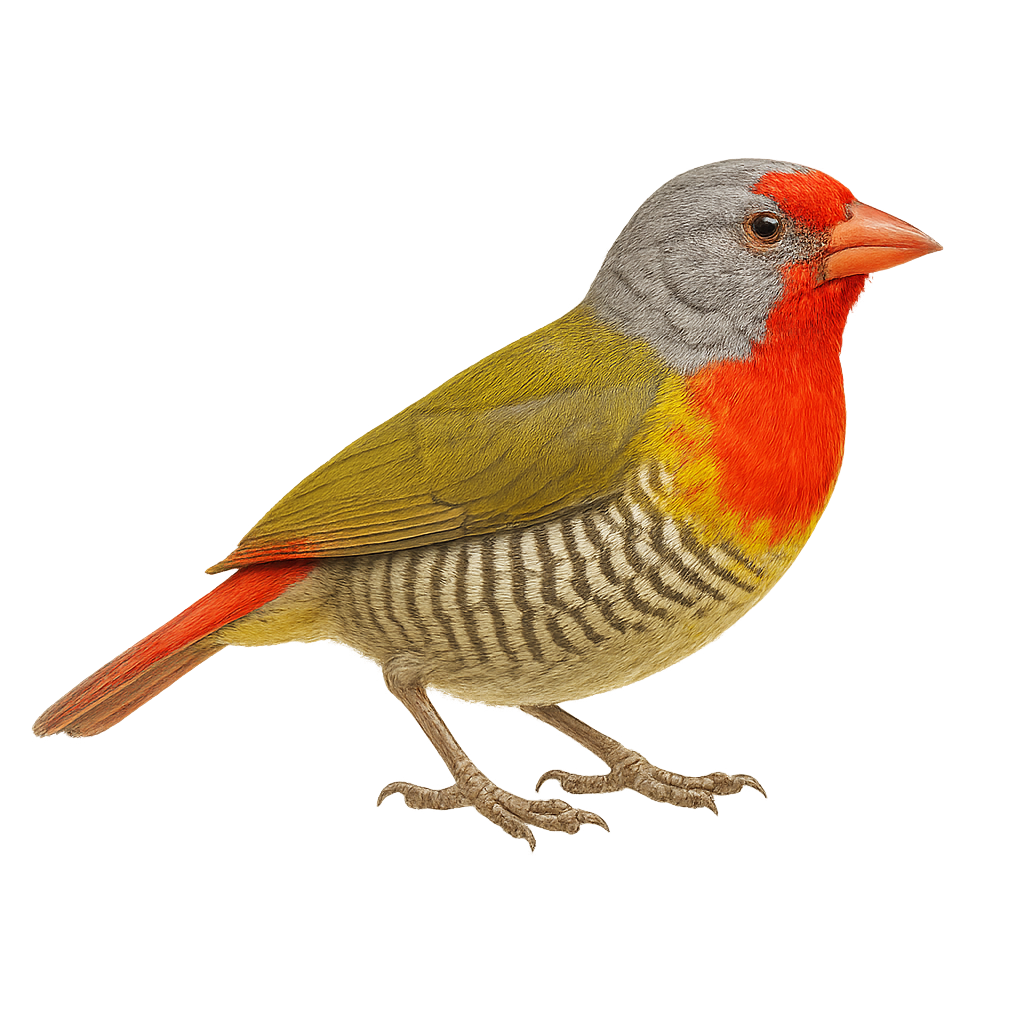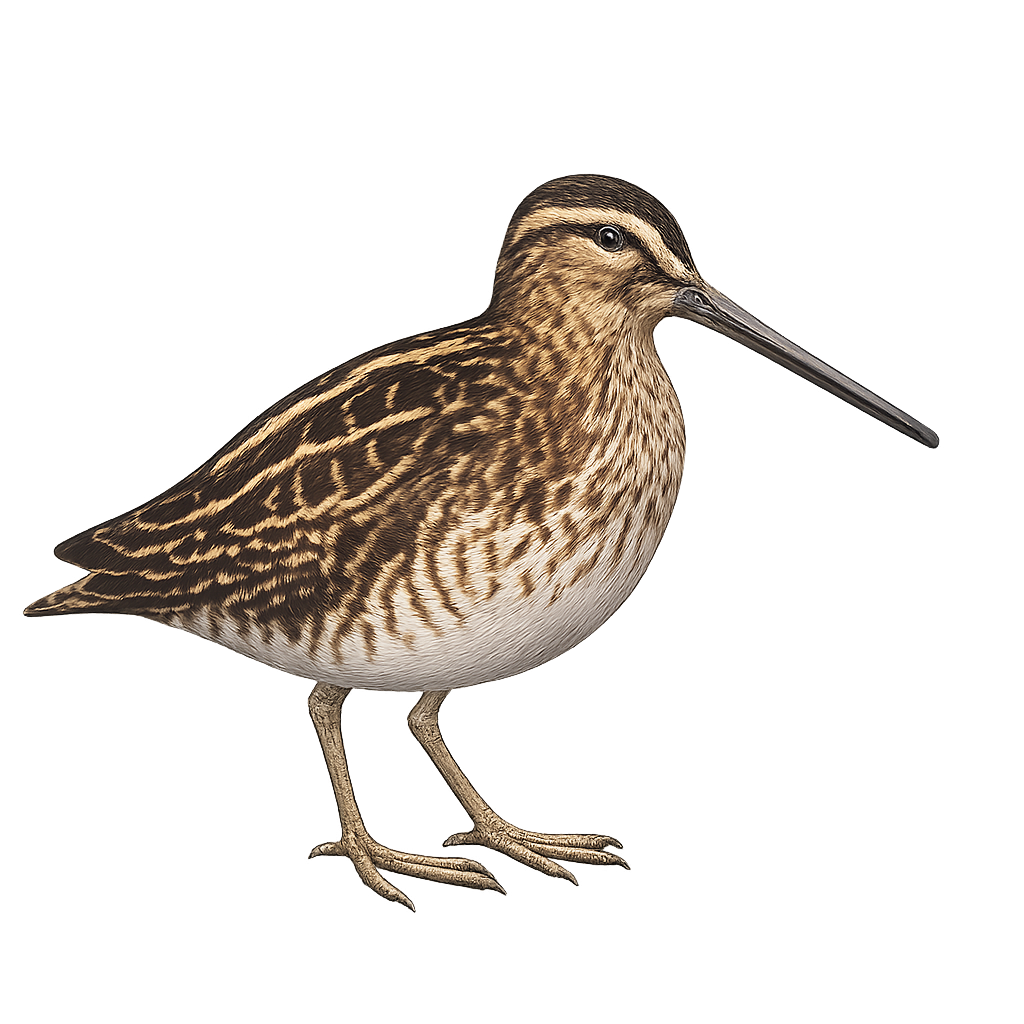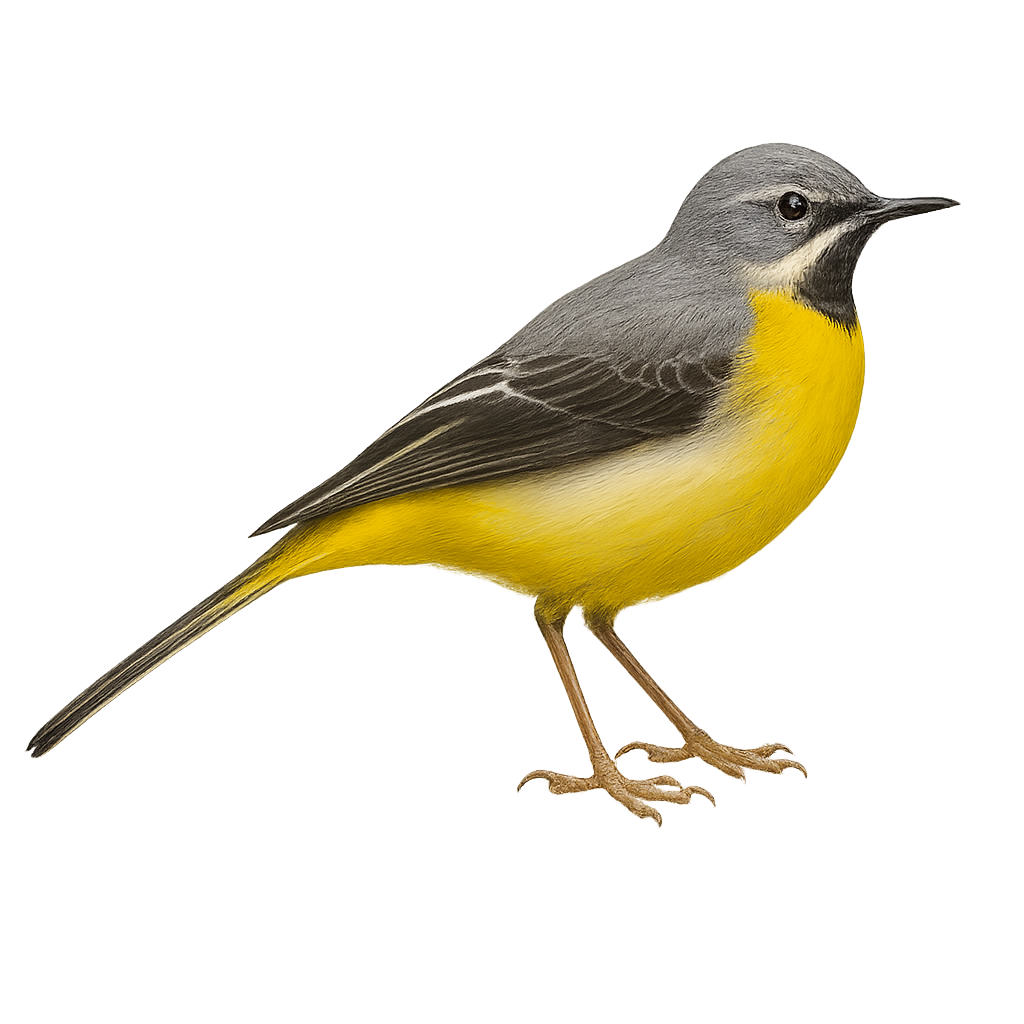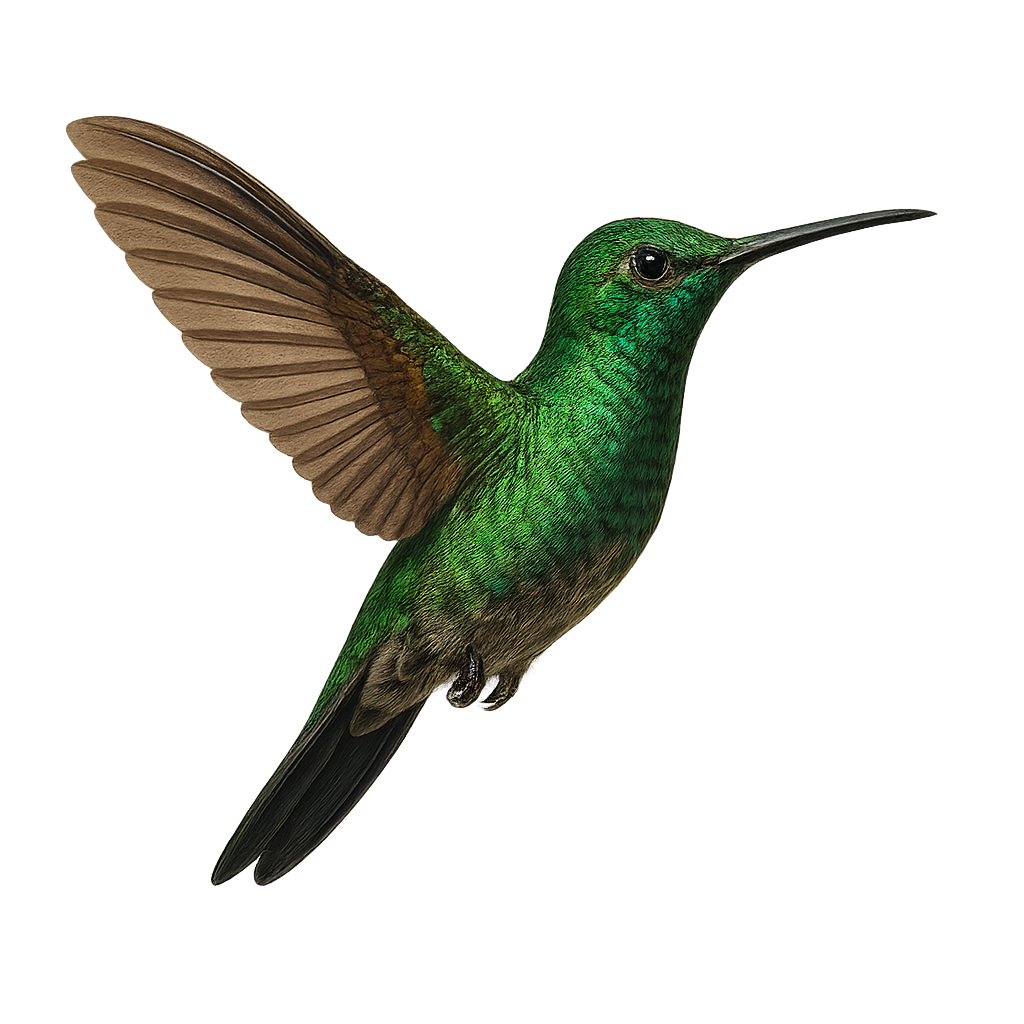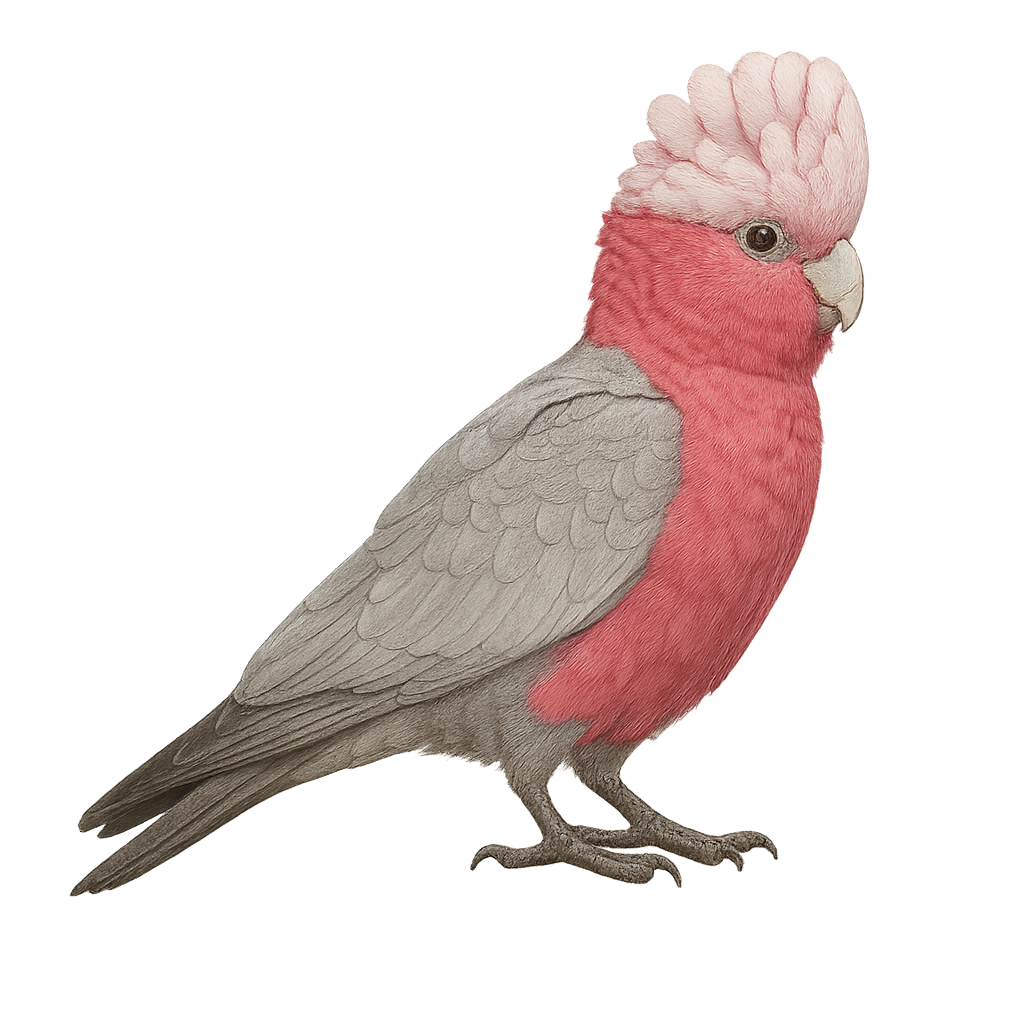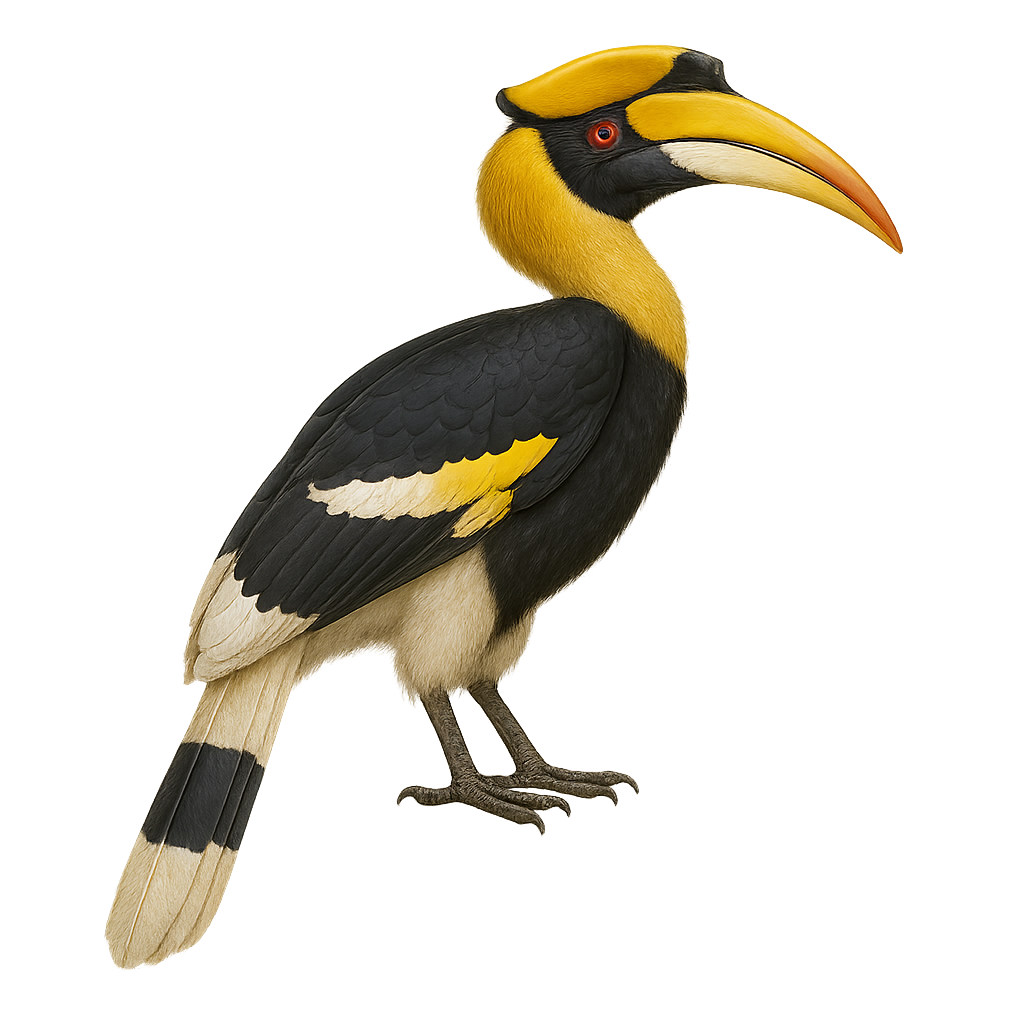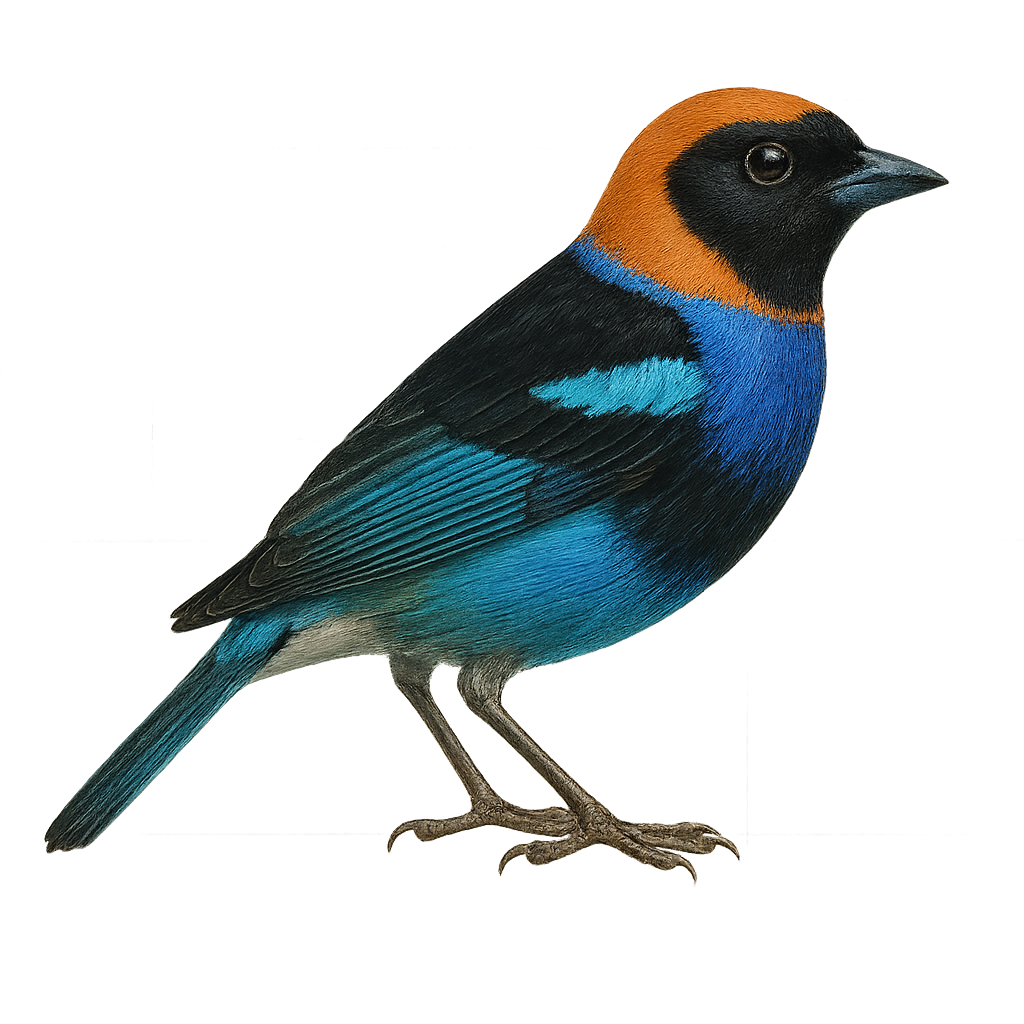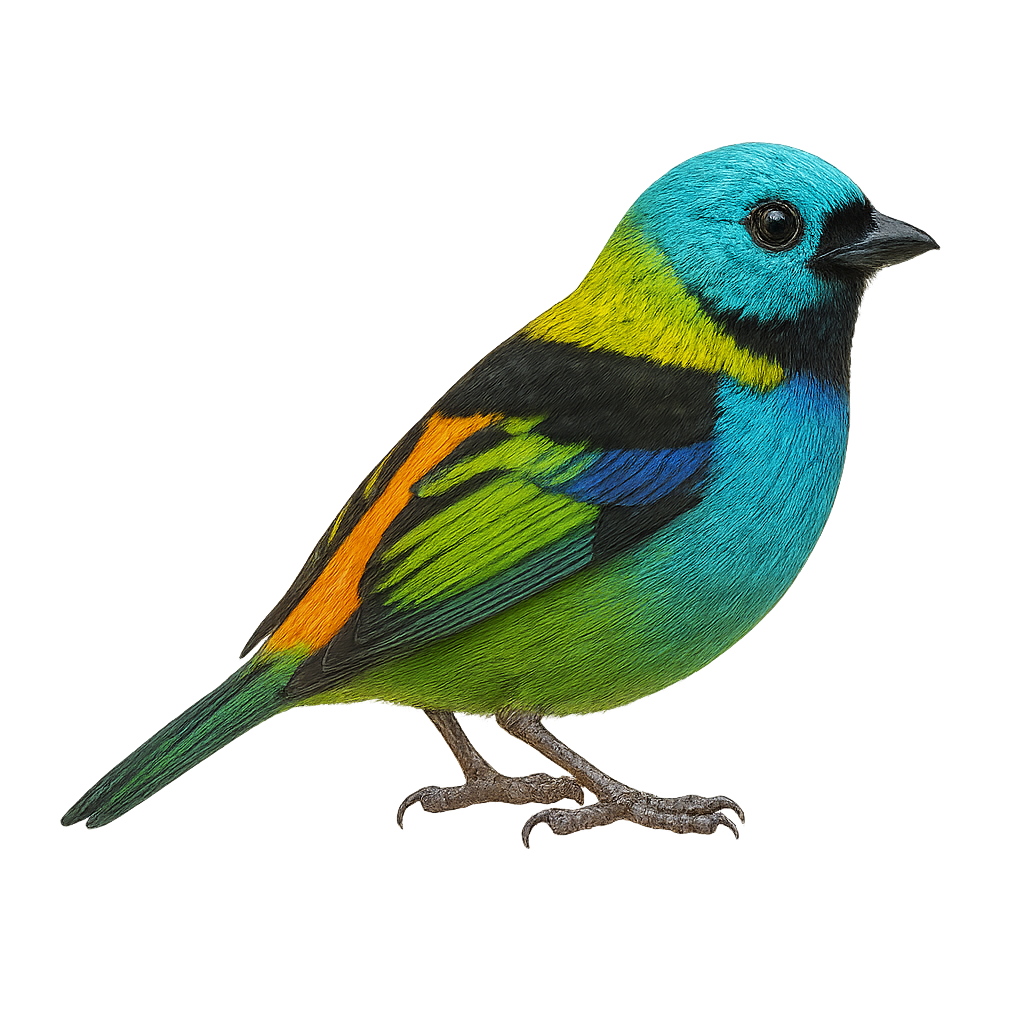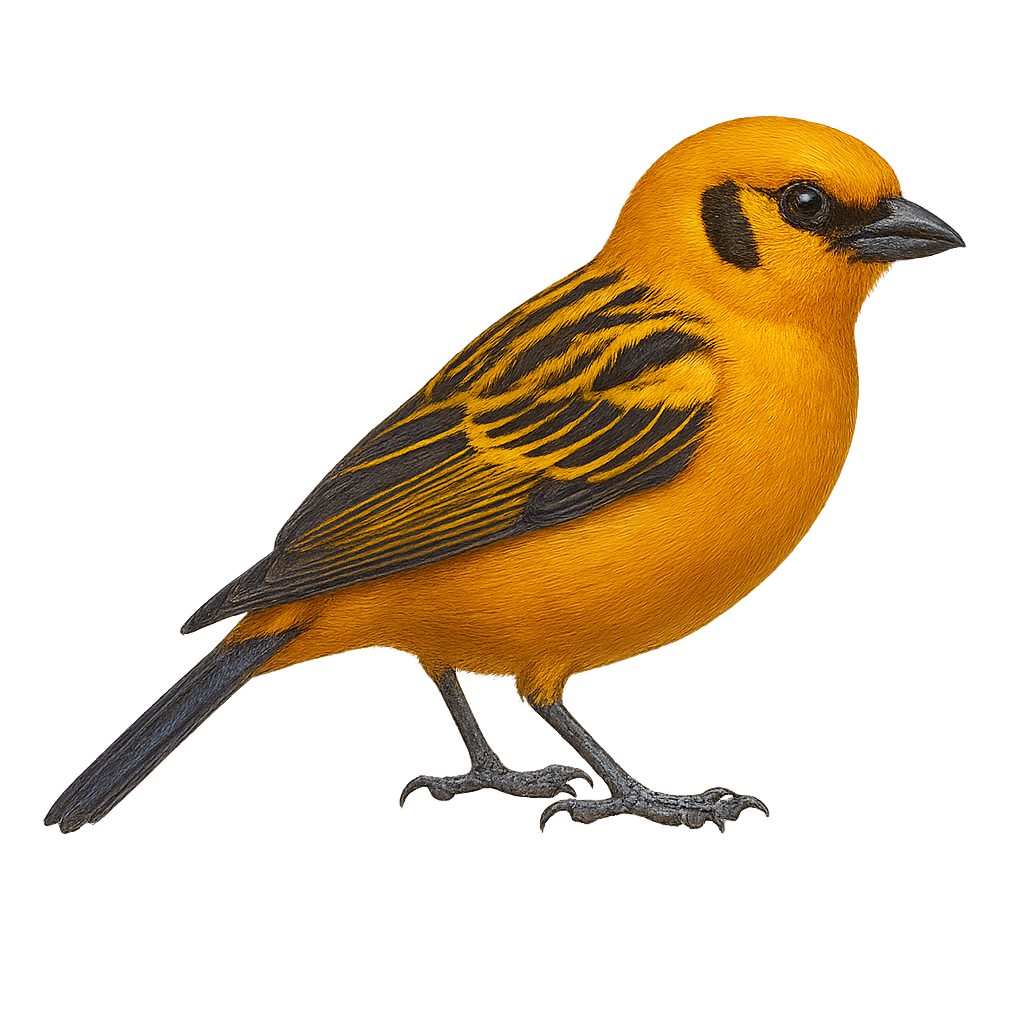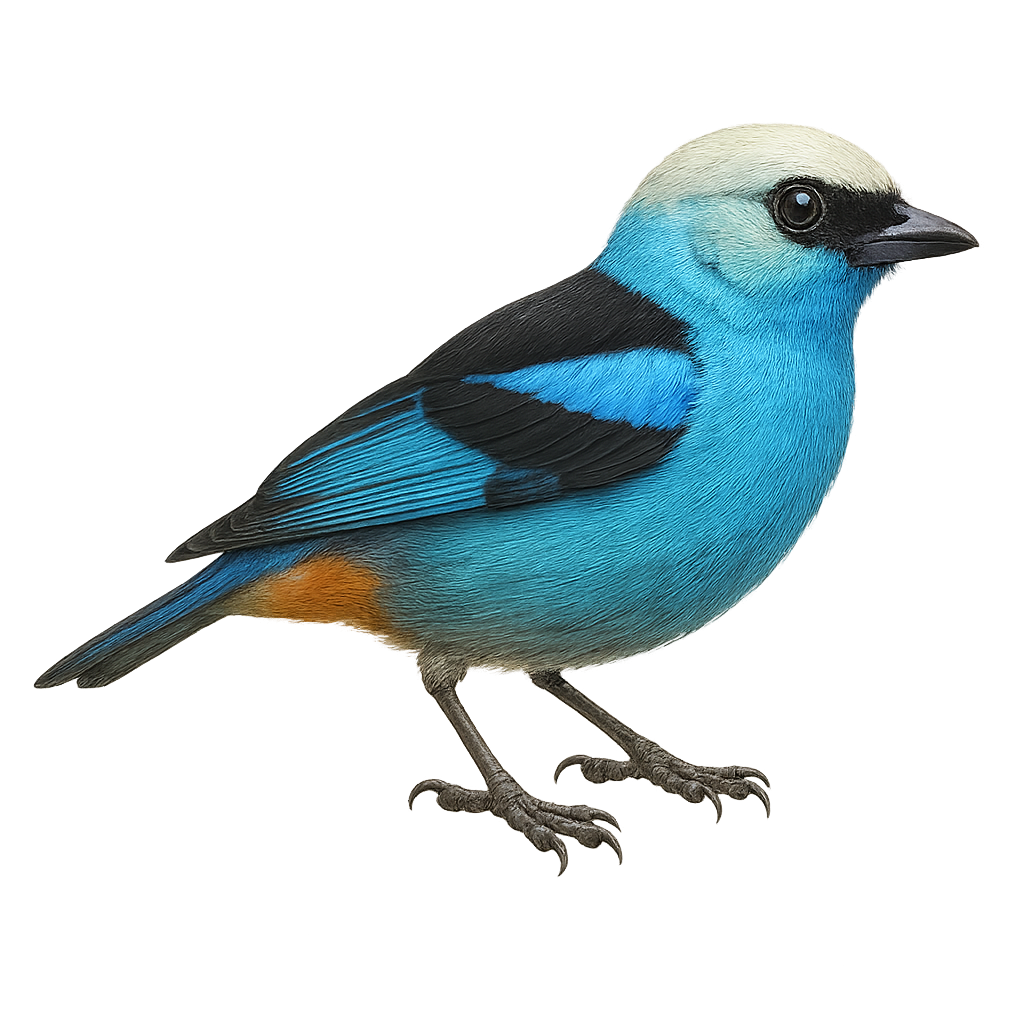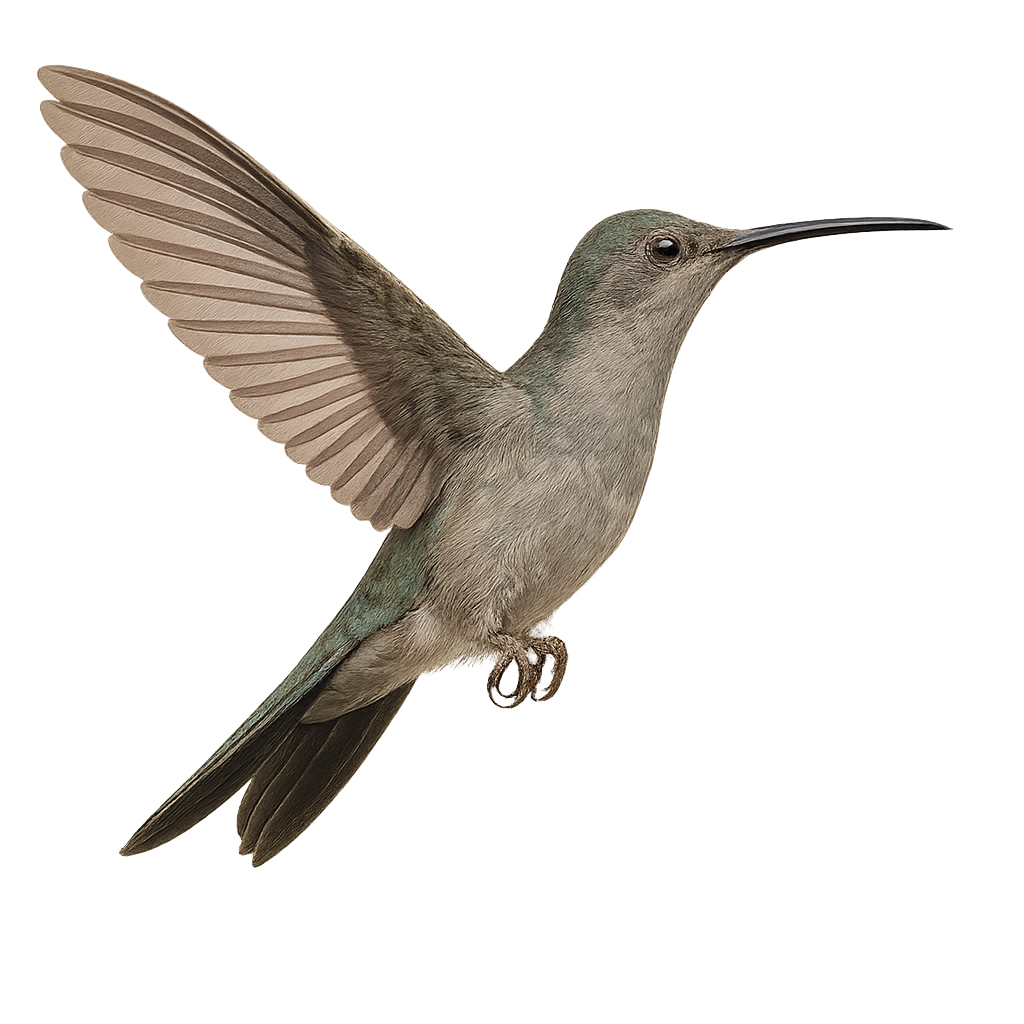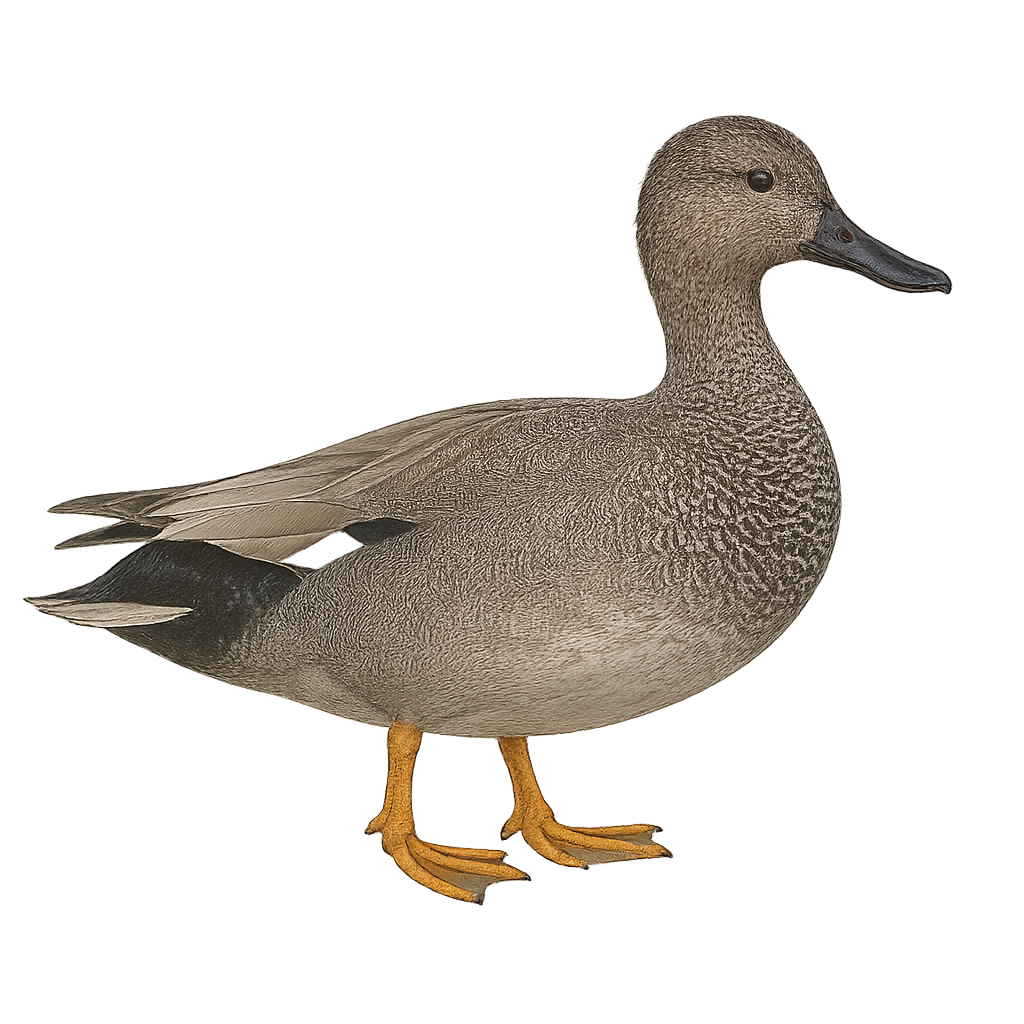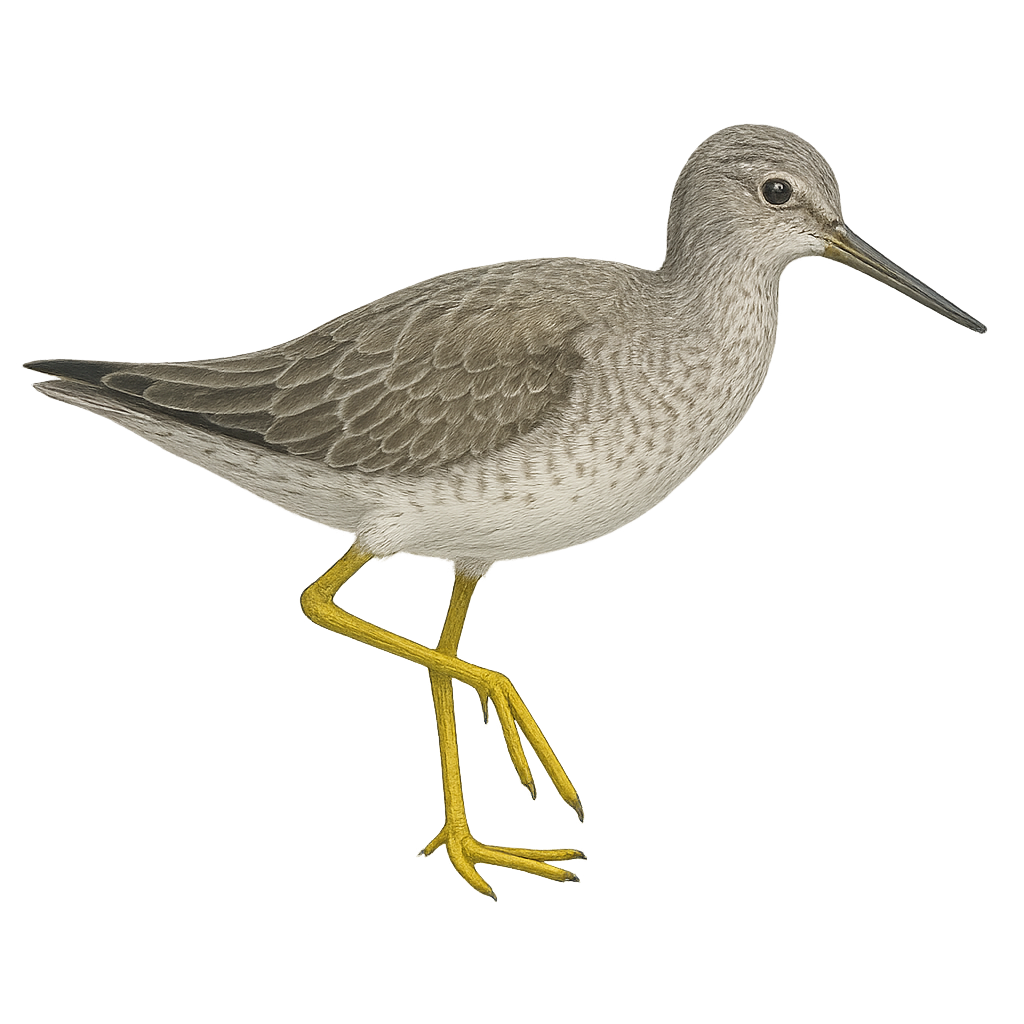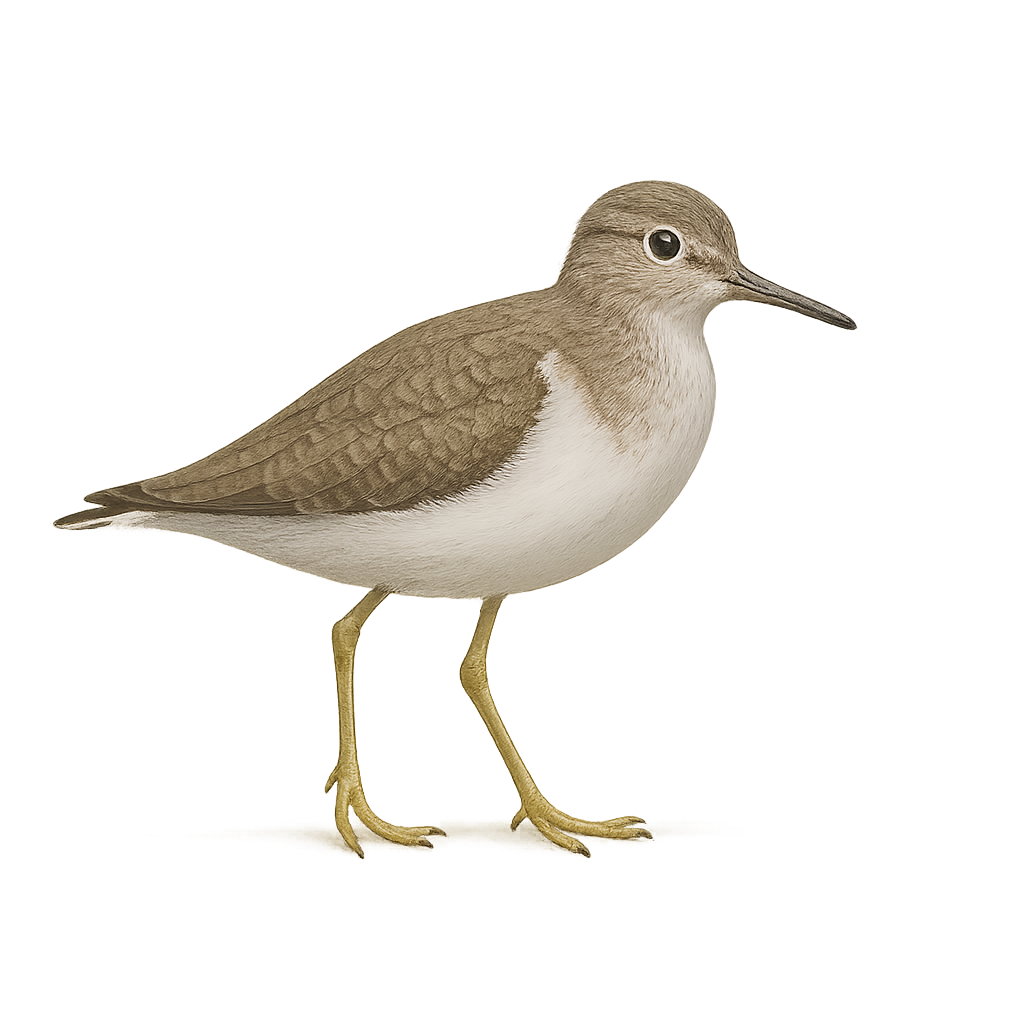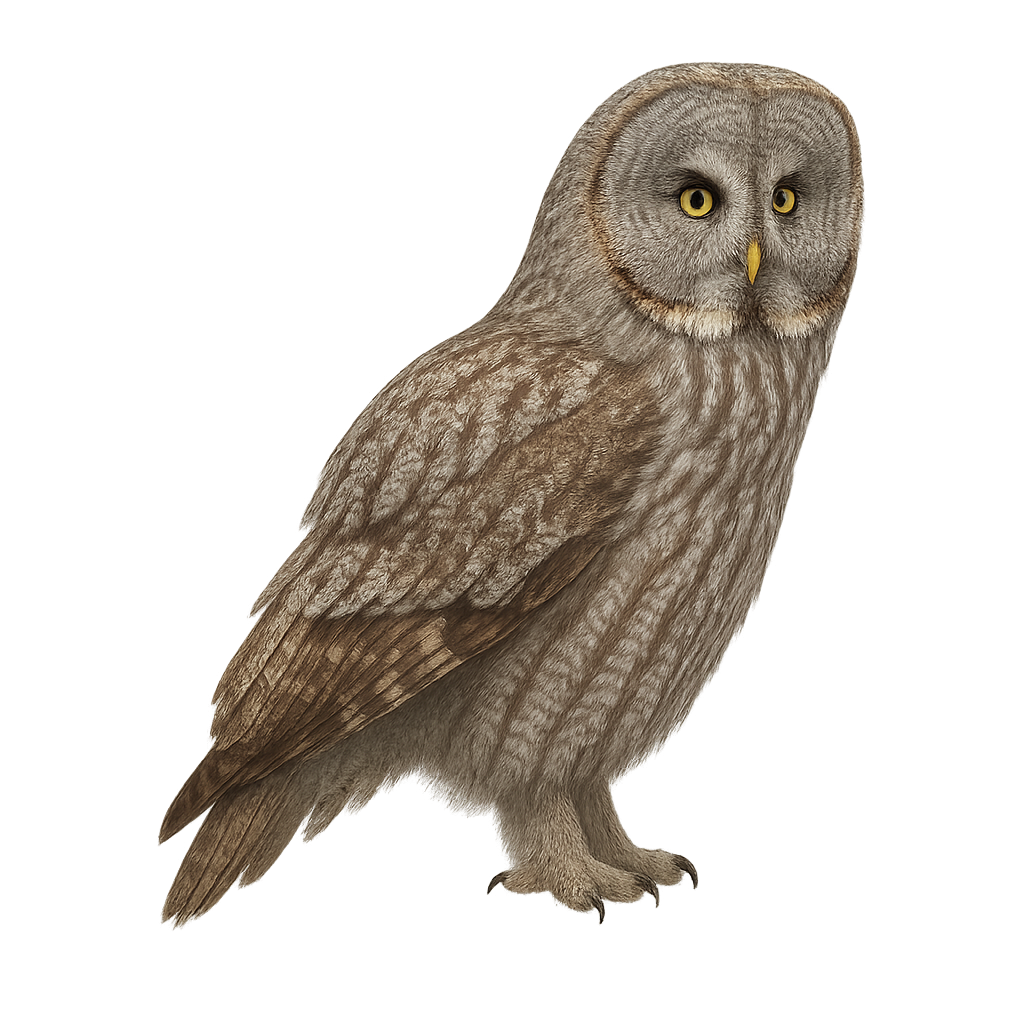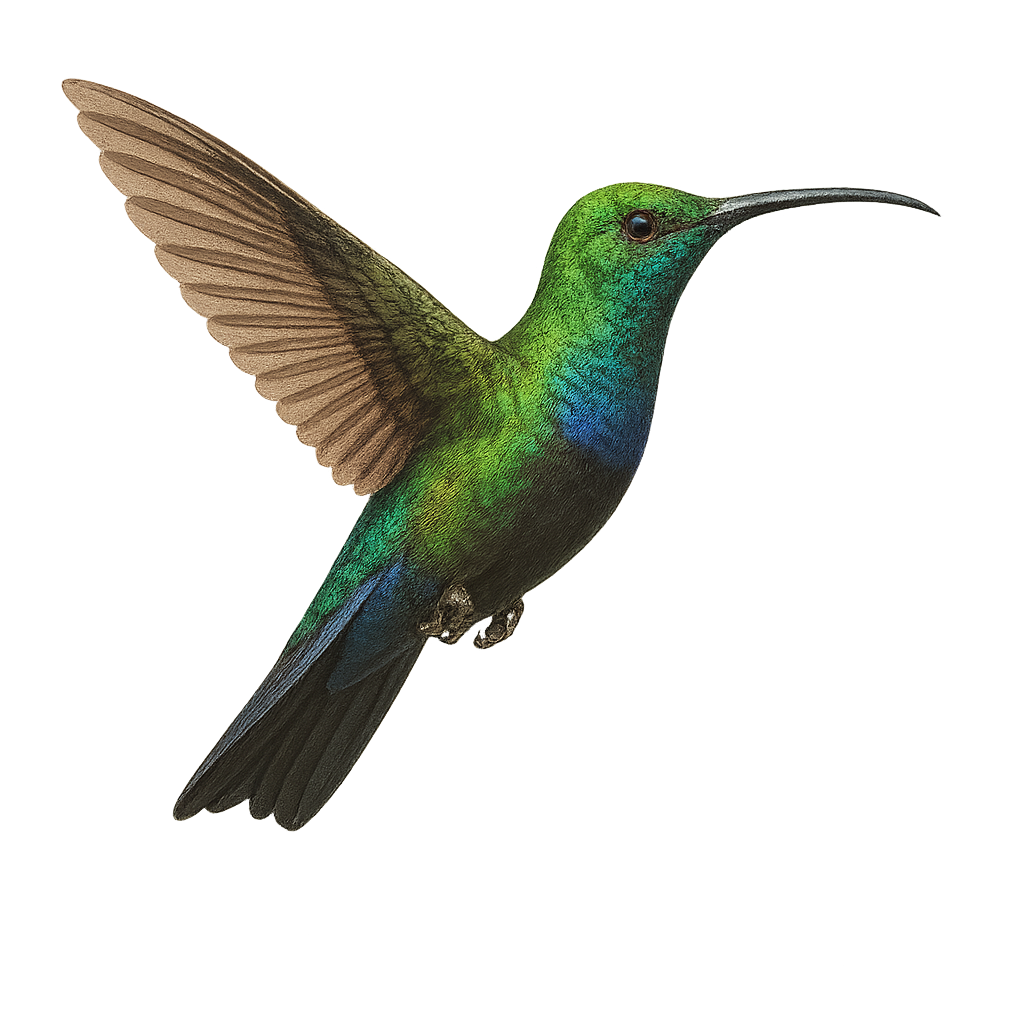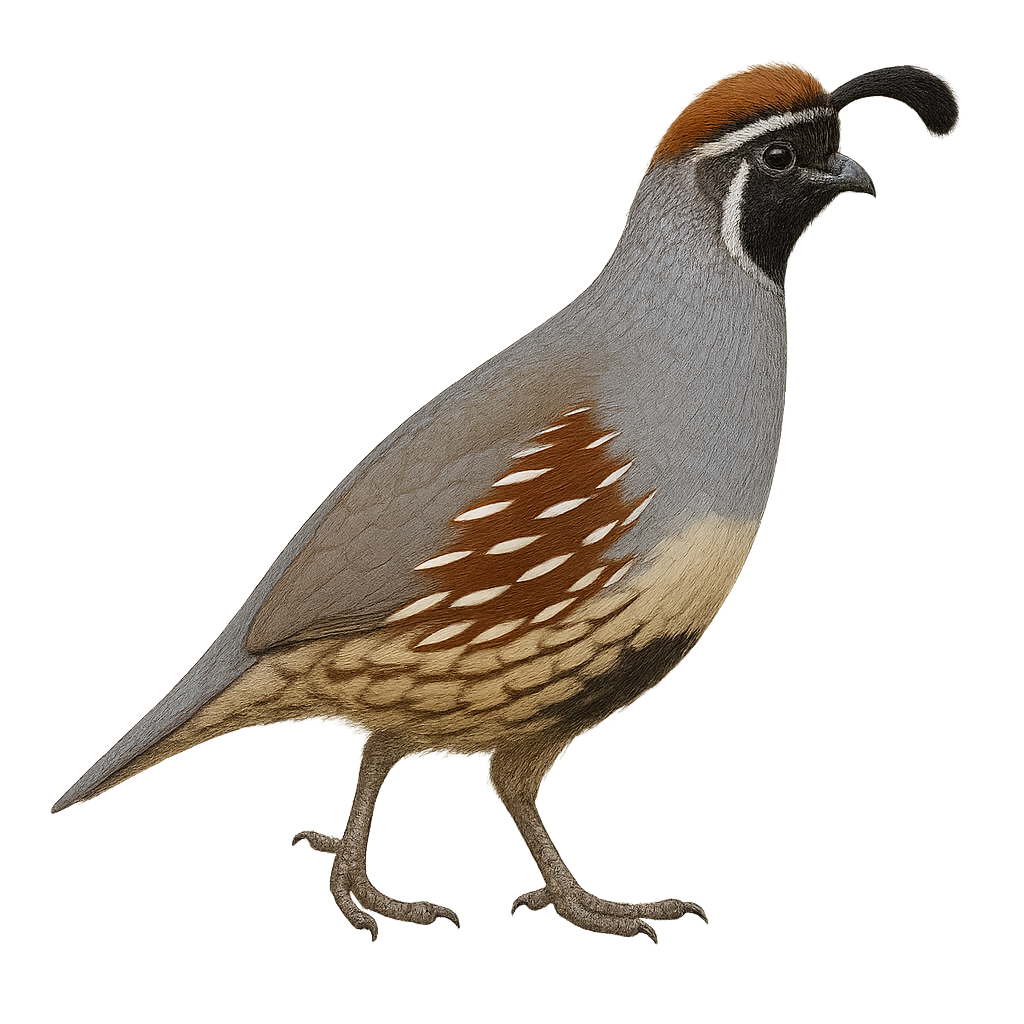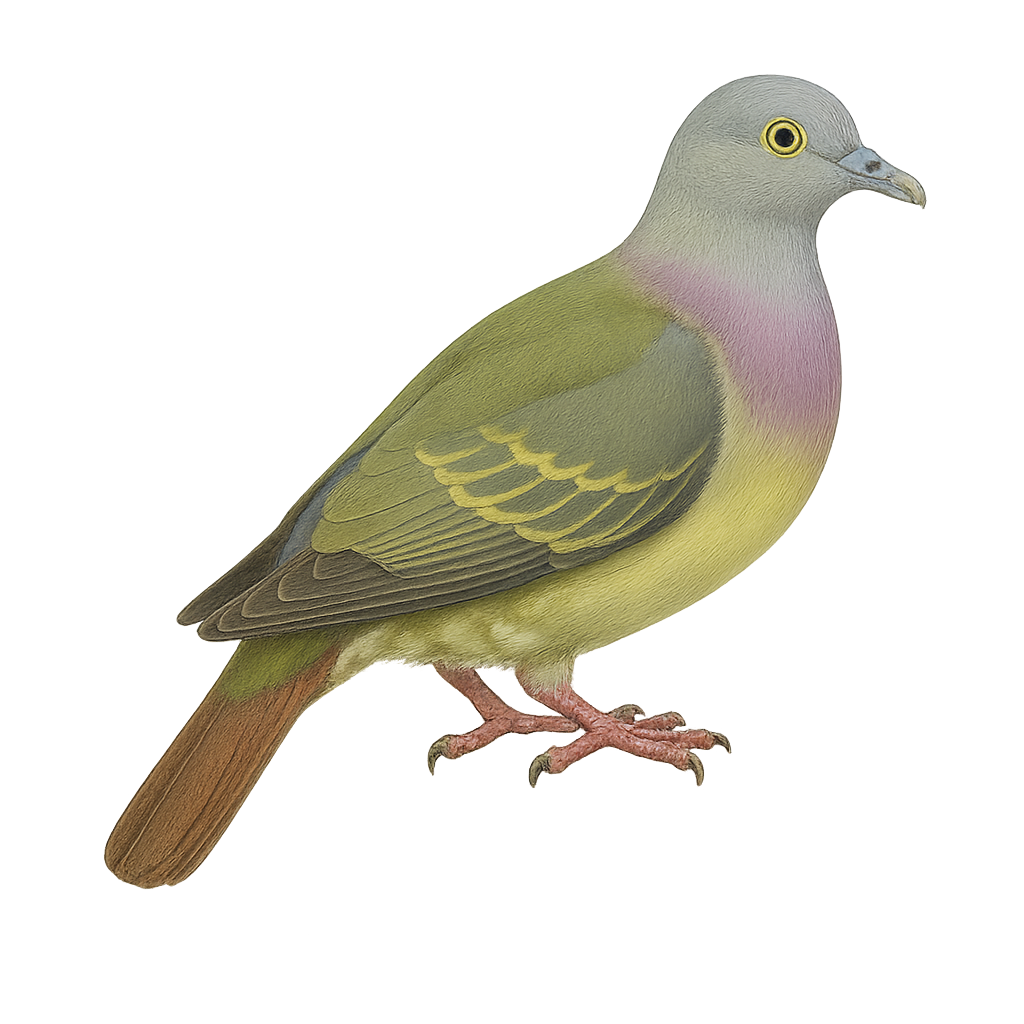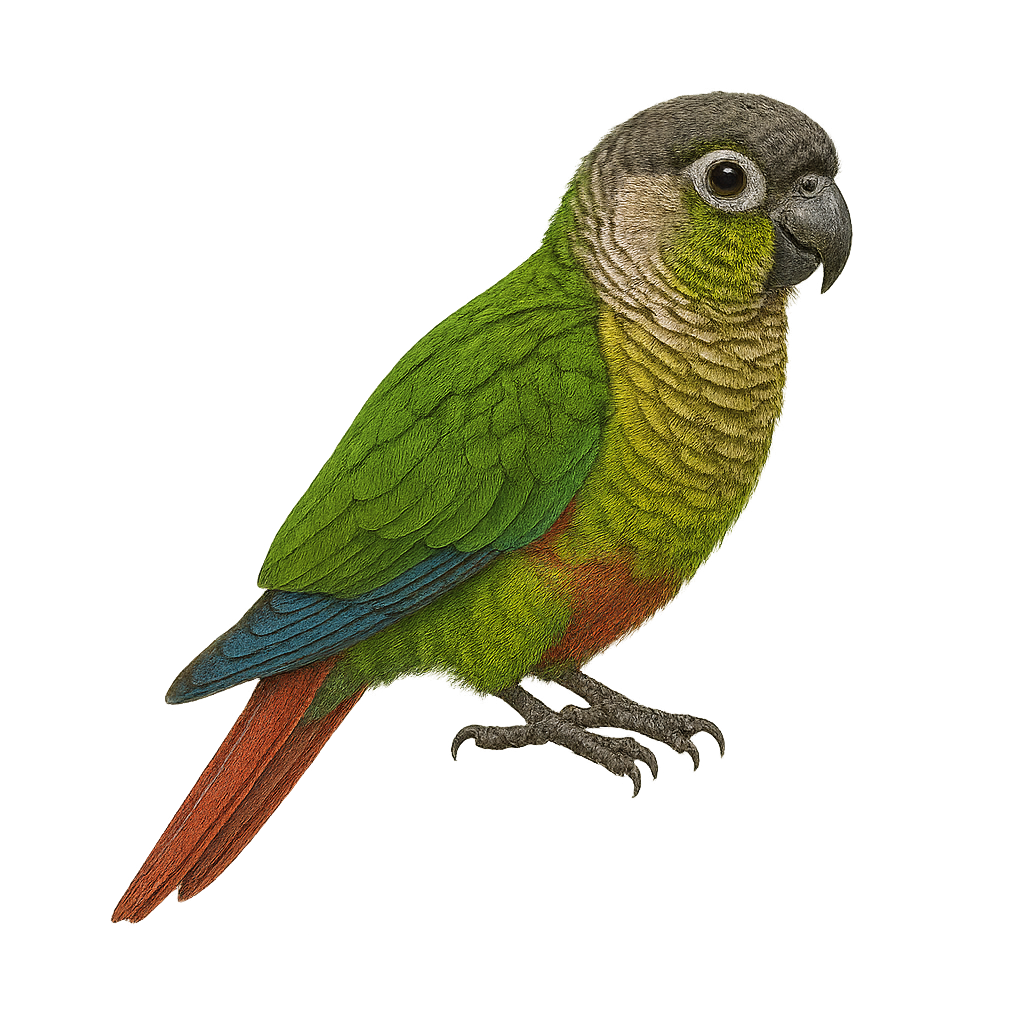The Grey-headed Albatross, or Thalassarche chrysostoma, is a majestic seabird known for its grey head and bright yellow bill. It primarily inhabits the southern hemisphere's oceans, favoring cold and temperate waters. This albatross is an excellent glider, using air currents to travel long distances with minimal effort. It feeds mainly on fish, squid, and crustaceans, which it skillfully captures by diving. Breeding occurs on remote islands, where it builds mound-shaped nests. Although sociable at sea, it becomes territorial during the breeding season. Unfortunately, the species is threatened by longline fishing and climate change, which affect its food resources and nesting sites.
The Gillett's Lark (Calendulauda gilletti) is a discreet and little-known bird belonging to the Alaudidae family. It is mainly found in the arid and semi-arid regions of East Africa, particularly in Ethiopia and Somalia. This medium-sized bird has a sandy-brown plumage, perfect for blending into its desert environment. Its melodious and varied song is often heard at dawn and dusk, when it is most active. The Gillett's Lark primarily feeds on seeds and insects, which it finds by foraging on the ground. It builds its nest directly on the ground, hidden among dry grasses and shrubs.
The Groove-billed Ani is a medium-sized bird, easily identified by its glossy black plumage and distinctive grooved bill. It is primarily found in tropical and subtropical regions of Central and South America. This sociable bird lives in family groups and feeds mainly on insects, fruits, and small vertebrates. It is often seen in open areas, grasslands, and forest edges. Its call is a mix of whistles and chirps. Although generally not very shy, it can be suspicious in the presence of potential threats.
The Greater Ani, scientifically known as Crotophaga major, is a bird belonging to the Cuculidae family, predominantly found in South America. It is recognized by its glossy black plumage and thick, curved bill. This bird measures about 48 cm in length and is often seen in noisy groups. It inhabits wetlands, swamps, and flooded forests. The Greater Ani is a social bird that builds communal nests where multiple females lay their eggs. Its diet mainly consists of insects, small vertebrates, and fruits. Although relatively common within its range, it is sometimes threatened by the destruction of its natural habitat.
The Green Pygmy Goose, or Nettapus pulchellus, is a tiny, vibrantly colored duck found in northern Australia and New Guinea. Its plumage features metallic green, white, and dark brown tones, with a compact body and short bill. It inhabits lagoons, swamps, and flooded woodland areas. Omnivorous, it feeds on seeds, aquatic plants, and small invertebrates. Usually shy and solitary, it can also be seen in small groups. Its population is considered stable, although it relies heavily on healthy wetland ecosystems.
The Green Aracari, Pteroglossus viridis, is a colorful bird from the Ramphastidae family. It is distinguished by its bright green plumage, large bill, and red and yellow markings on its head and neck. This bird measures about 30 to 35 cm in length and weighs between 110 and 160 grams. It primarily inhabits the tropical rainforests of South America, particularly in Venezuela, Guyana, and northern Brazil. Arboreal, it mainly feeds on fruits but also consumes insects and small vertebrates. Sociable, it often lives in small family groups. Its call is a series of high-pitched, repetitive cries. Although its habitat is threatened by deforestation, the species is currently classified as "Least Concern" by the IUCN.
The Great Argus, or Argusianus argus, is a remarkable bird from the Phasianidae family, renowned for its spectacular plumage and fascinating courtship displays. Native to the tropical forests of Southeast Asia, this bird is distinguished by its long, ocellated feathers adorning its wings and tail. The male, larger than the female, uses these feathers to attract mates during elaborate courtship rituals. Primarily terrestrial, it prefers dense habitats where it can blend in. Although the Great Argus is a shy bird, it is sometimes seen in clearings searching for food, mainly fruits, insects, and small invertebrates. Its population is threatened by deforestation and hunting, leading to its classification as near threatened by the IUCN.
The Northern Goshawk is an elegant and powerful raptor, known for its slender silhouette and rapid, erratic flight through dense forests. This medium-sized hawk primarily inhabits temperate forests in Europe, Asia, and North America, where it hunts birds, primarily wood pigeons, doves, and sometimes smaller prey. The Northern Goshawk is an exceptional hunter, using its speed and precise aerial maneuvers to catch its prey.
Despite its remarkable flying skills, the Northern Goshawk is discreet and often difficult to spot, preferring to blend into its forest environment. While not currently threatened, habitat loss and human disturbance pose risks to its population.
The Golden-throated Barbet, or Psilopogon franklinii, is a colorful bird from the Megalaimidae family. It is recognized by its vibrant green plumage, golden throat, and sturdy beak. This bird is primarily arboreal, feeding on fruits, insects, and occasionally small vertebrates. It inhabits the tropical and subtropical forests of Southeast Asia, particularly in mountainous regions. Its call is distinctive, often heard before the bird is seen. The Golden-throated Barbet is territorial, usually observed alone or in pairs. Although relatively common in its natural habitat, it is rarely seen outside dense forests.
The Great Barbet, or Megalaima virens, is a colorful bird from the Megalaimidae family. It is primarily found in the tropical and subtropical forests of South and Southeast Asia, particularly in the mountainous regions of the Himalayas. This bird is distinguished by its bright green plumage, blue head, and red throat. It measures about 30 cm in length and has a robust beak adapted to its diet, which mainly consists of fruits but also includes insects. The Great Barbet is a diurnal bird, often seen alone or in small groups. It is known for its loud and repetitive call that echoes through the canopy. Although its habitat is threatened by deforestation, it is currently classified as of least concern by the IUCN.
The Green-winged Pytilia, or Pytilia melba, is a small, colorful bird belonging to the Estrildidae family. It is primarily found in sub-Saharan Africa, where it inhabits savannas, open woodlands, and shrublands. This bird is distinguished by its vibrant plumage, featuring green wings, a red belly, and a brownish back. Both males and females exhibit similar colors, although males are often more vibrant. The Green-winged Pytilia is a granivorous bird, mainly feeding on seeds but also consuming insects. It is known for its melodious songs and elaborate courtship displays. Although generally not very shy, it can be suspicious when faced with potential threats.
The Great Knot is a medium-sized migratory bird belonging to the Scolopacidae family. It is recognizable by its speckled brown plumage and long, slender bill. During the breeding season, it displays more pronounced patterns on its back and chest. This bird breeds mainly in the Arctic regions of Siberia and migrates to the coasts of Australia and Southeast Asia for the winter. It frequents wetlands, estuaries, and sandy beaches where it primarily feeds on mollusks, crustaceans, and insects. The Great Knot is a vulnerable species due to habitat loss and human disturbances.
The Jack Snipe is a small, discreet wader, often difficult to spot due to its cryptic plumage that blends perfectly with its environment. This small bird, with its brown and mottled plumage, primarily inhabits marshes and bogs in Northern Europe and Asia. It feeds on invertebrates, mainly worms, insects, and mollusks, which it finds by probing the mud with its short, straight bill.
The Jack Snipe adopts a stealthy behavior and is often observed hiding in dense vegetation or freezing when threatened. While more difficult to observe due to its discretion, it is threatened by habitat loss and changes in the hydrological regime in its breeding areas.
The gray wagtail is a small bird found primarily near rivers, streams, and wetlands across Europe, Asia, and northern Africa. This passerine bird is distinguished by its gray and yellow plumage, long tail, and lively, jittery movements. It primarily feeds on insects, which it catches while running along riverbanks and searching through rocks. The gray wagtail is also known for its territorial behaviors and pleasant song.
The Green-crowned Brilliant, scientifically known as Heliodoxa jacula, is a medium-sized hummingbird found in the humid forests of Central America, from Costa Rica to Panama. Measuring about 11 to 12 cm, this bird is notable for its striking metallic green plumage and emerald crown. Males have a distinctive blue-violet throat, while females feature a white throat speckled with green. Their relatively short, slightly curved beak is well-suited for nectar feeding. These birds are often seen hovering near flowers, using their agility to access nectar while playing a vital role in pollination.
Galah
Eolophus roseicapilla
The Galah, or Eolophus roseicapilla, is a distinctive Australian bird known for its striking pink and grey plumage. It measures about 35 cm in length and weighs between 270 and 350 grams. Its strong beak is well-suited for its diet of seeds, fruits, and vegetation. Highly social and intelligent, it lives in large flocks and is often seen in open areas such as grasslands and farmlands. The Galah is famous for its aerial acrobatics and loud calls. It adapts well to captivity, making it a popular pet, although it requires significant attention and mental stimulation.
The great hornbill (Buceros bicornis) is a large forest bird (95–120 cm long, weighing 2–3.4 kg) known for its massive yellow bill topped by a hollow casque. It inhabits humid tropical and gallery forests from India to Vietnam, at elevations from sea level to 1500 m. Primarily frugivorous, it feeds on figs and various fruits, supplementing its diet with small vertebrates and insects. Monogamous and territorial, pairs remain together year-round. During the breeding season (01.01–31.05), the male and female engage in loud duets and casque-butting displays. After pairing, the female seals herself within a tree cavity and incubates 1–2 eggs for 38–40 days, receiving food through a narrow slit provided by the male.
The Golden-hooded Tanager, scientifically known as Stilpnia larvata, is a vibrant bird native to the tropical rainforests of Central America. This small passerine is easily identified by its striking blue head, contrasting with its black body and wings adorned with shades of green and yellow. Measuring about 13 cm in length, it primarily feeds on fruits, insects, and nectar. Its song is a soft warble, often heard at dawn or dusk. Although generally solitary, it can sometimes be seen in small groups. The Golden-hooded Tanager plays a crucial role in seed dispersal, aiding in forest regeneration.
The Green-headed Tanager, or Tangara seledon, is a colorful and fascinating bird primarily inhabiting the humid tropical forests of South America, notably in Brazil, Argentina, and Paraguay. This bird is easily recognizable by its vibrant plumage, blending shades of green, blue, yellow, and black. It measures about 13 to 14 cm in length and weighs between 15 and 20 grams. The Green-headed Tanager is a sociable bird that feeds mainly on fruits, nectar, and insects. It plays an important role in seed dispersal, thus contributing to forest regeneration. Although not considered threatened, deforestation poses a potential threat to its natural habitat.
The Golden Tanager, or Tangara arthus, is a colorful and fascinating bird native to the humid tropical forests of South America. It is easily recognizable by its bright plumage, primarily golden with shades of black on the wings and tail. This small bird measures about 13 to 14 cm in length. It typically lives in groups and feeds mainly on fruits, insects, and nectar. The Golden Tanager is often observed in mountain forests, where it plays a crucial role in seed dispersal. Although its habitat is threatened by deforestation, it is still relatively common in some areas.
The Green-and-gold Tanager, or Tangara labradorides, is a small tropical songbird from the humid forests of South America, recognizable by its bright green plumage with metallic blue hues and agile form. It is mainly found in the Andes, from Venezuela to Peru, at elevations between 1000 and 2500 meters. Highly active, it often moves in flocks through the canopy, feeding on fruits, insects, and nectar. Though discreet, its vivid colors make it a favorite among bird photographers. The species is considered stable in terms of population.
The Grey-breasted Sabrewing, scientifically known as Campylopterus largipennis, is a medium-sized hummingbird found mainly in the tropical rainforests of South America. This stunning bird is noted for its iridescent plumage, with shades of green and blue on its back and a grayish breast. Its tail is broad and slightly forked, giving it a distinctive silhouette in flight. Males and females are similar, although females may have slightly duller colors. This hummingbird is often seen feeding on nectar, using its long bill to reach tubular flowers. It plays a crucial role in the pollination of plants within its habitat.
The Gadwall is a medium-sized dabbling duck, measuring between 46 and 56 cm in length with a wingspan of 78 to 90 cm. The male has finely patterned gray plumage with a distinctive white wing patch visible in flight, a black rump, and a dark bill. The female is mottled brown with an orange-edged dark bill. This species inhabits wetlands such as marshes, ponds, lakes, and flooded meadows rich in aquatic vegetation. It feeds mainly on leaves, stems, and seeds of aquatic plants, but also consumes aquatic invertebrates, especially during the breeding season. The Gadwall is a partial migrant, breeding in Eurasia and North America, and wintering in more southern regions. Although listed as Least Concern by the IUCN, it is sensitive to wetland degradation and pollution.
The Grey-tailed Tattler, or Tringa brevipes, is a medium-sized wader, measuring about 25 cm in length. It is easily recognizable by its grey plumage on the back and wings, contrasting with a lighter belly. Its bill is straight and relatively long, adapted for foraging in mudflats and shores. During the breeding season, it displays dark streaks on its chest. This migratory bird mainly frequents the coasts and estuaries of Asia and Australia. It feeds primarily on small invertebrates, which it captures by probing the wet ground. Although its conservation status is currently considered of least concern, habitat degradation could pose a long-term threat.
The Common Sandpiper is a small, agile, and active wader, easily recognizable by its light brown plumage, speckled with darker spots, and its long, slender legs. It is also distinguished by its short, straight bill and its energetic and nervous behavior. It is commonly found along riverbanks, estuaries, marshes, and lakes, where it hunts by running along the shores, capturing small insects, worms, and crustaceans found in the mud and shallow water.
This migratory bird typically breeds in temperate regions of Europe and Asia and migrates to North Africa for the winter. While the population of the Common Sandpiper remains stable in many regions, the species is threatened by the loss of wetland habitats and the effects of climate change, which alters aquatic ecosystems. The species is protected in some areas where it is found.
The Great Grey Owl is a large nocturnal raptor, easily recognizable by its broad facial disc and piercing yellow eyes. Its plumage is primarily gray and brown, with lighter markings on the belly and wings. It has a massive build, a round head, and long wings that allow it to fly silently. This raptor primarily inhabits boreal forests and northern regions of Europe, Asia, and North America.
The Great Grey Owl primarily hunts small mammals, such as hares, rodents, and birds. It has a remarkable ability to locate its prey with its keen hearing and silent flight. It is a solitary owl, preferring dense forests where it can hide during the day. While its population remains generally stable, it is threatened by deforestation, habitat loss, and human disturbances. It is protected in many areas to ensure the preservation of its forest habitats.
The Green-throated Carib, Eulampis holosericeus, is a captivating bird native to the Caribbean, known for its vibrant and iridescent plumage. This medium-sized hummingbird features a shimmering green throat and a body with metallic hues. It is commonly found in tropical forests, gardens, and coastal areas, where it primarily feeds on nectar, supplemented by insects. The Green-throated Carib is an essential pollinator, playing a crucial role in the reproduction of flowering plants. Its rapid and agile flight allows it to maneuver easily among flowers, while its territorial behavior drives it to vigorously defend its food sources.
The Gambel's Quail, scientifically known as Callipepla gambelii, is a medium-sized ground-dwelling bird recognized for its distinctive comma-shaped topknot and bluish-gray plumage with black and white markings. It inhabits the arid regions of the southwestern United States and northern Mexico. This bird favors desert and semi-desert habitats, feeding primarily on seeds, leaves, and insects. Social by nature, Gambel's Quail often forms groups called "coveys". During the breeding season, males perform courtship displays to attract females. Although capable of flight, it prefers to run to evade predators.
The Grey-cheeked Green Pigeon, Treron griseicauda, is a medium-sized bird belonging to the Columbidae family. It is characterized by its vibrant green plumage, with a distinctive grey head and tail. This bird is primarily arboreal, inhabiting tropical and subtropical moist forests. It feeds mainly on fruits, playing a crucial role in seed dispersal. Its call is soft and melodious, often heard at dawn and dusk. Although generally discreet, it can be observed in small groups, especially near food sources. Its population is stable, but deforestation poses a potential threat to its natural habitat.
The Green-cheeked Parakeet, or Pyrrhura molinae, is a small parrot native to South America, particularly the tropical forests of Brazil, Bolivia, and Argentina. It is recognizable by its bright green plumage, green cheeks, and reddish tail. Measuring about 26 cm in length, it is appreciated for its curious and sociable personality. It lives in groups and primarily feeds on fruits, seeds, and flowers. In captivity, it is often chosen as a pet due to its playful and affectionate nature. Although it can be noisy, it is generally less vocal than other parrots.


